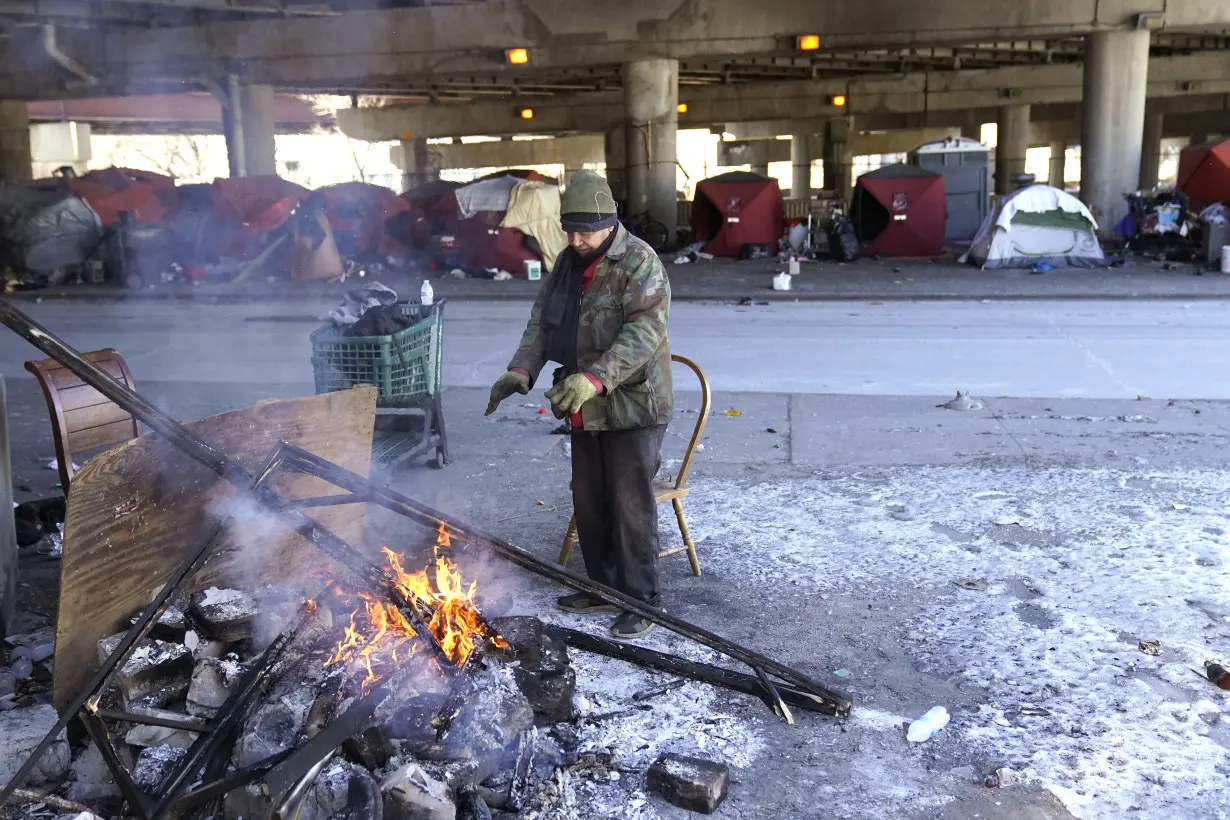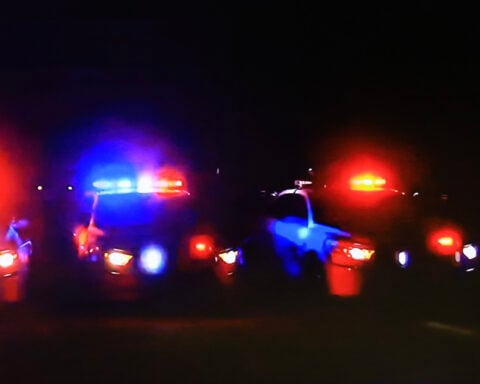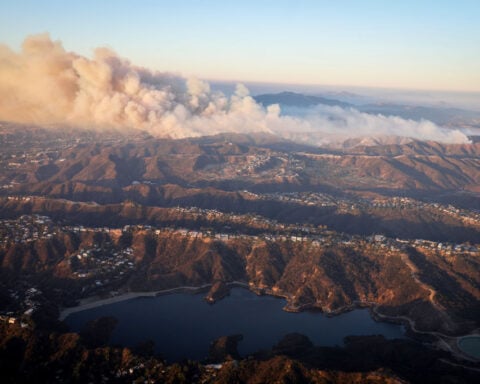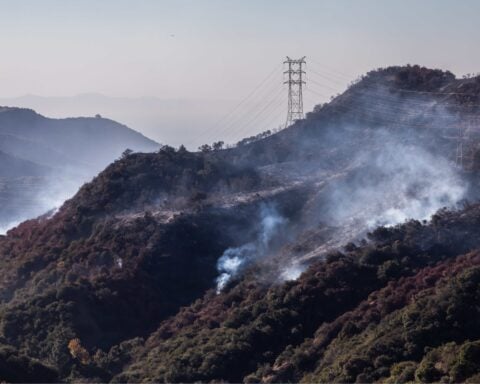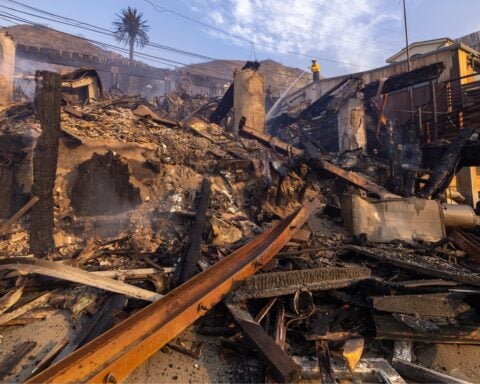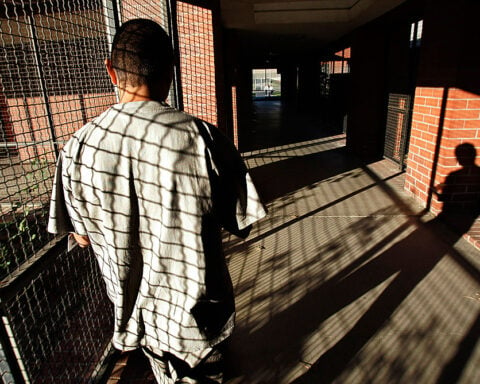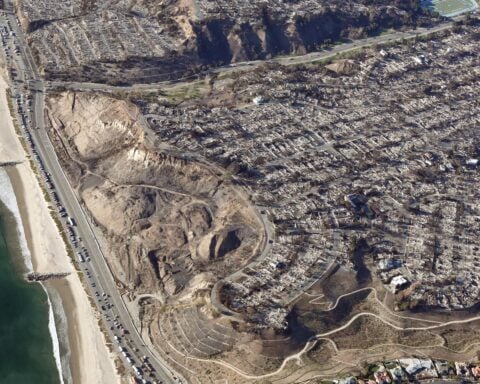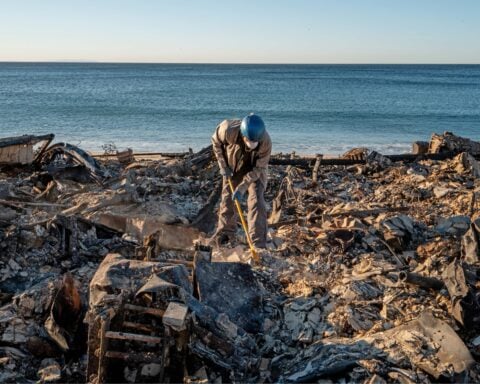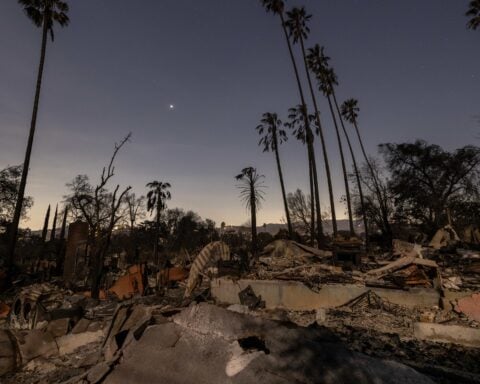Much of the United States is shivering through brutal cold as most of the rest of the world is feeling unusually warm weather. However strange it sounds, that contradiction fits snugly in explanations of what climate change is doing to Earth, scientists said.
In a map of global temperatures the last several days, big chunks of the world — the Arctic, Asia, parts of Africa, the Middle East and South America — show as dark red, signifying more than a dozen degrees Fahrenheit (7 degrees Celsius) warmer than the late 20th-century average. But the United States stands out like a cold thumb — a deep bluish-purple that is just as out of whack but on the frigid side.
Wind chills in parts of North Dakota reached minus 70 degrees (minus 56 degrees Celsius), while the heat index in Miami was more than 160 degrees warmer at 92 (33 degrees Celsius). The fourth-coldest NFL football game took place in Kansas City, while across the globe the thermometer hit a blistering 92 degrees, 12 degrees (6.8 degrees Celsius) warmer than average on Friday during tennis' Australian Open in Melbourne. Warm temperature records fell overnight in Aruba, Curacao, parts of Argentina, Oman and Iran.
Where weather was warmer than usual, it was happening both in the southern hemisphere, which is in summer, and in the northern hemisphere, which is in winter. For example, Oman, in the north, had its warmest January night ever at 79.5 degrees (26.4 degrees Celsius). Argentina, in the south, had a record for warmest January night at 81.1 Fahrenheit (27.3 Celsius).
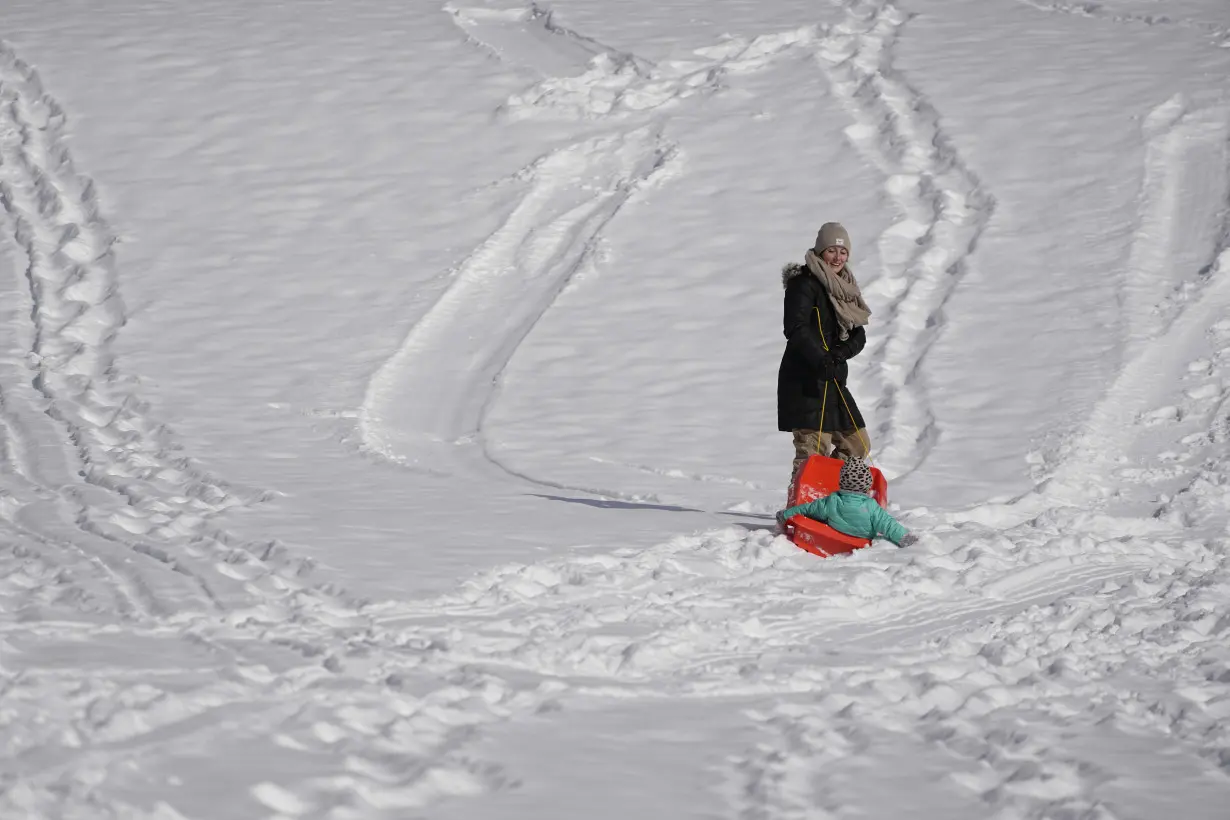
If it seems as if the world has gone topsy-turvy, in a way it has. Because this all comes from what's happening in the Arctic, where it used to be warming twice as fast as the rest of the planet. Now, it's warming three to four times faster.
“When the Arctic is off-the-charts warm (like now), we’re more likely to see frigid cold invade places like Texas that are ill-equipped to deal with it,” said Jennifer Francis, a Woodwell Research Center climate scientist and a pioneer in the theory of Arctic Amplification, which links the cold outbreaks to climate change. “Rapid Arctic warming is one of the clearest symptoms of human-caused climate change, making winter extremes more likely even as the globe warms overall.”
The way the cold is invading is through a weather phrase that is becoming increasingly familiar to Americans: The polar vortex. It's a weather term that goes back to 1853 but has only been frequently used in the past decade or so.

That could be because the icy stabs are happening more often, said winter weather expert Judah Cohen of Atmospheric Environmental Research, a commercial firm outside of Boston.
The polar vortex is strong, icy weather that usually stays over the top of the planet, penned in by strong winds that whip around it, Cohen said.
It's like an ice skater spinning rapidly with her arms tucked in, he said. But when the polar vortex weakens, the arms start flailing out, the skater slips and “all the cold air then gets released away from the center of the polar vortex," Cohen said.
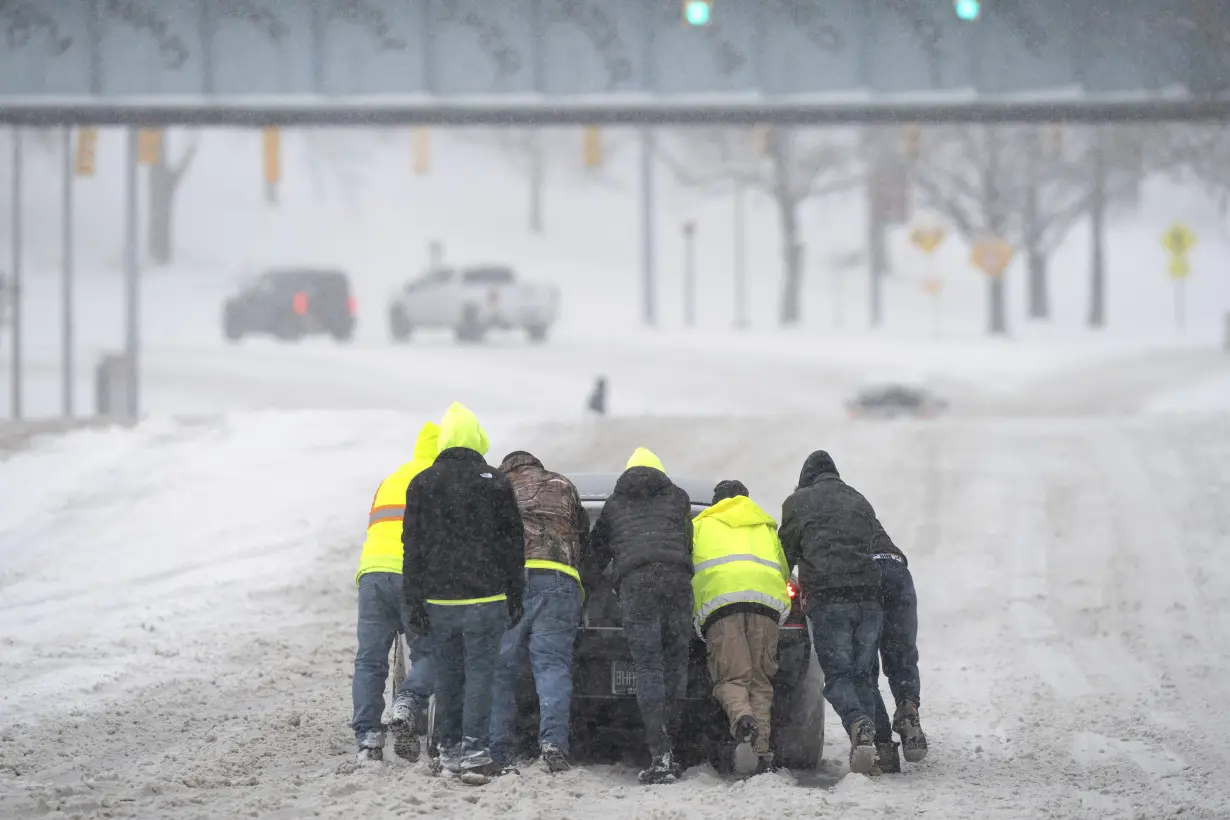
The current cold outbreak is consistent with Arctic change and the polar vortex, Cohen said. “What we found is when the polar vortex stretches like a rubber band, severe extreme winter weather is much more likely in the United States. That's where it tends to be focused and in January we have an extreme case of that stretching of the polar vortex.”
This one is stronger and may last longer than most, Cohen said.
Cohen and others have done studies that show the polar vortex outbreaks have become more frequent in recent decades.
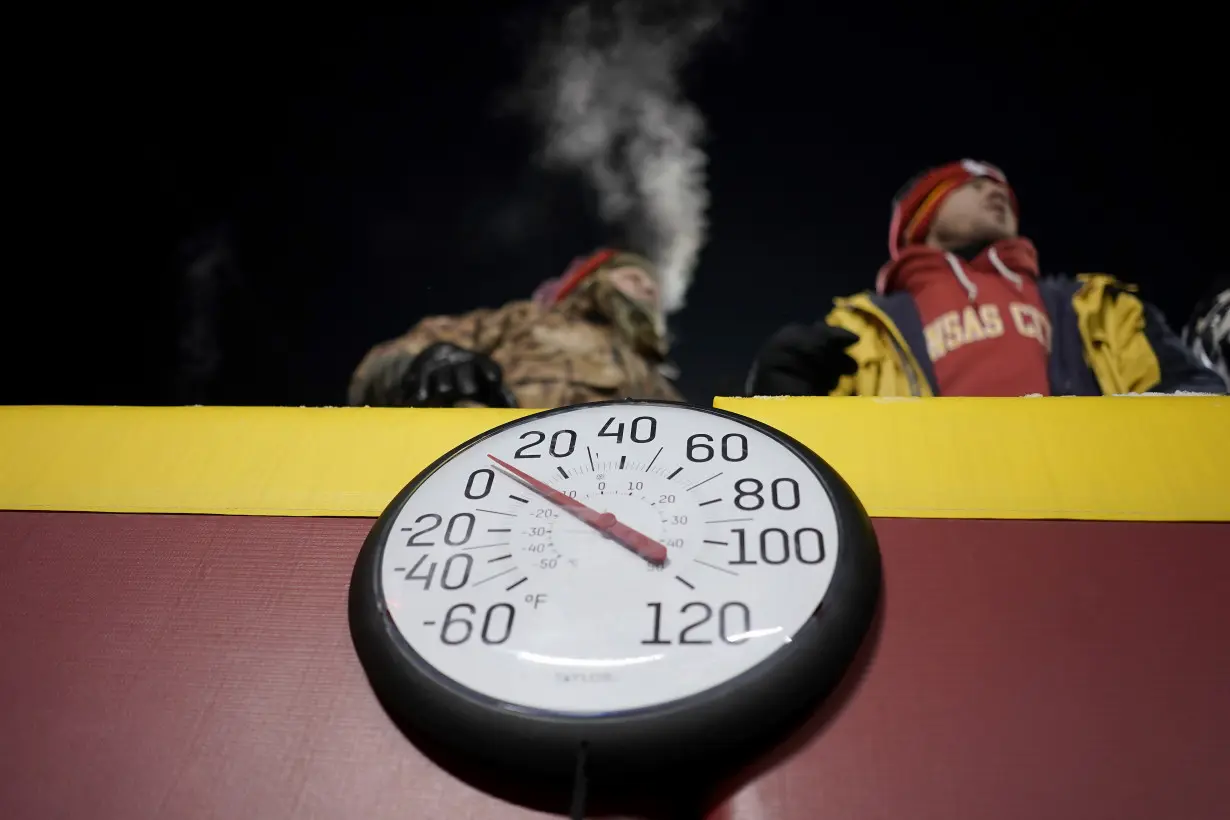
The idea is the jet stream — the upper air circulation that drives weather — is wavier in amplified global warming, said University of Wisconsin-Madison climate scientist Steve Vavrus. And those wave changes in the upper air knock the polar vortex out of its place and toward the United States, Cohen said.
It's a theory still debated by climate scientists but growing in acceptance. Initially, Vavrus and Francis theorized it was due to melting Arctic sea ice leading to barometic pressure changes. Now several scientists say it's more complicated, yet still connected to climate change and the supercharged warming in the Arctic, with other factors like Siberian snow cover and other atmospheric waves also playing a role.
“The key takeaway for me right now is that Arctic Amplification is happening and has complex interactions within our climate system. Winter will always bring us cold weather, but like the warm season it may be changing ways that we understand and ways that we are still learning about,” said University of Georgia meteorology professor Marshall Shepherd. “Unlike the Vegas slogan, what happens in the Arctic doesn't stay in the Arctic.”

Think of what’s happening as an orchestra making one symphony, and “what’s driving all those orchestra instruments is a warming planet,” Northern Illinois University meteorology professor Victor Gensini said.
Gensini and Cohen said this cold snap in the United States will fade in several days to be replaced by unusually warm weather, due to climate change. But another polar vortex looks like it's coming at the end of the month, though not as strong as this one, they said.
Despite the U.S. cold, Earth's global average temperature keeps flirting with daily, weekly and monthly records, as it has for more than seven months. That's because the United States is only 2% of Earth's surface, scientists said.

“A place like Chicago or Denver or Lincoln, Omaha, Oklahoma City, Dallas, Houston, I mean we’re all experiencing it,” said Gensini, who said the temperature outside his window Tuesday was 6 below. “We’re one isolated pocket if you look globally.”
___
Read more of AP’s climate coverage at http://www.apnews.com/climate-and-environment
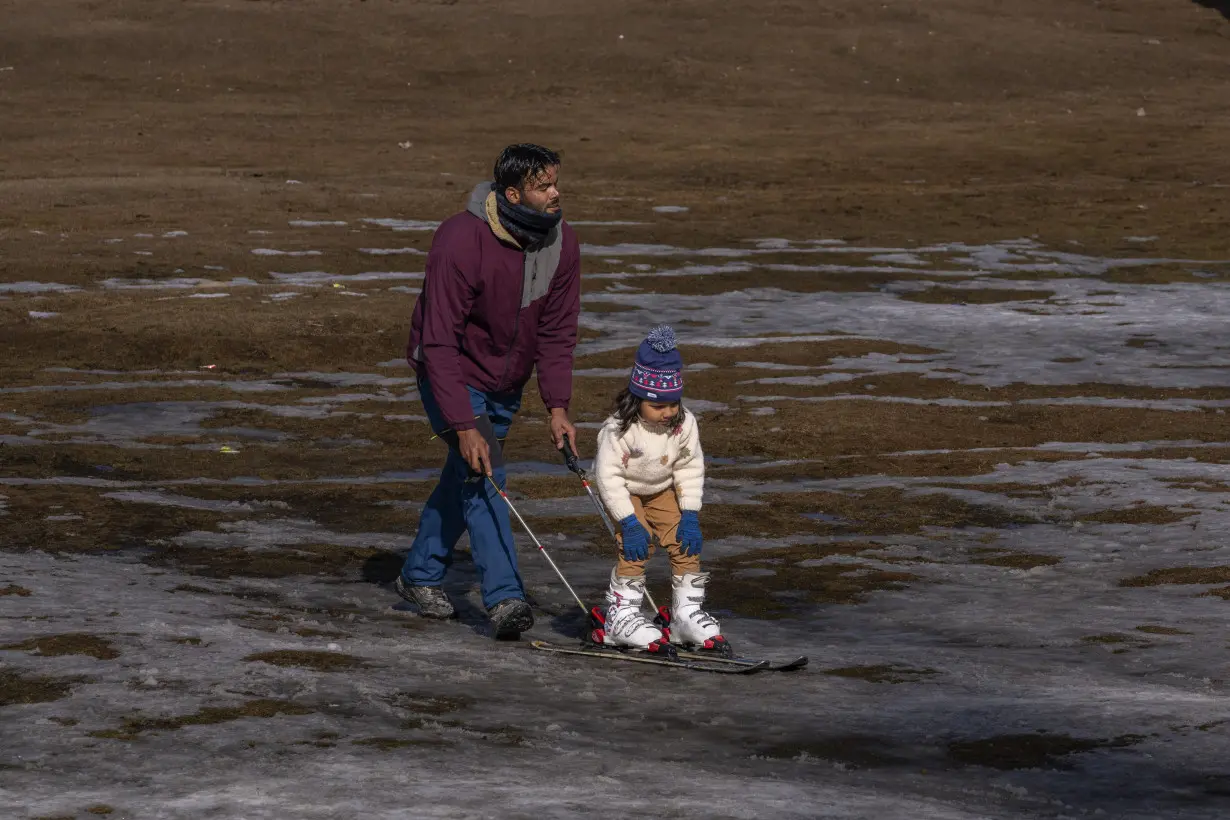
___
Follow Seth Borenstein on X at @borenbears
______
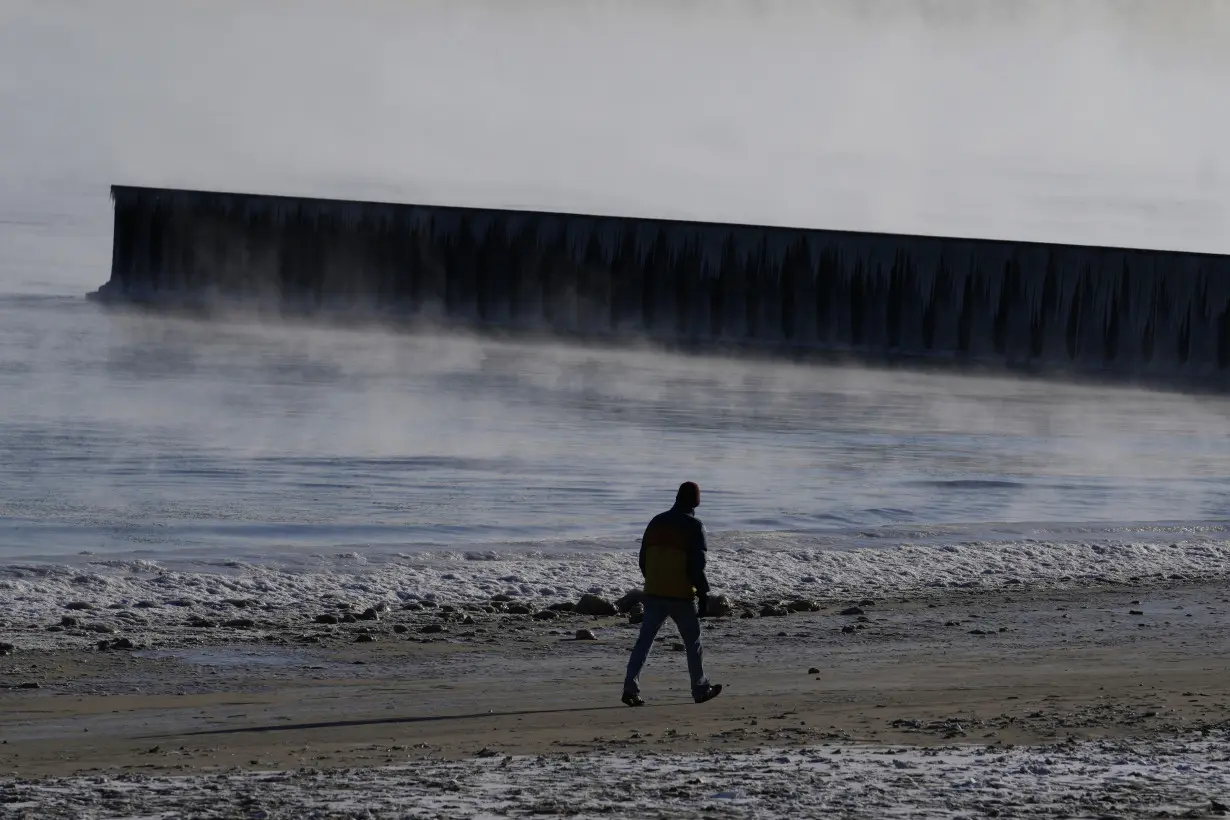
The Associated Press’ climate and environmental coverage receives financial support from multiple private foundations. AP is solely responsible for all content. Find AP’s standards for working with philanthropies, a list of supporters and funded coverage areas at AP.org.
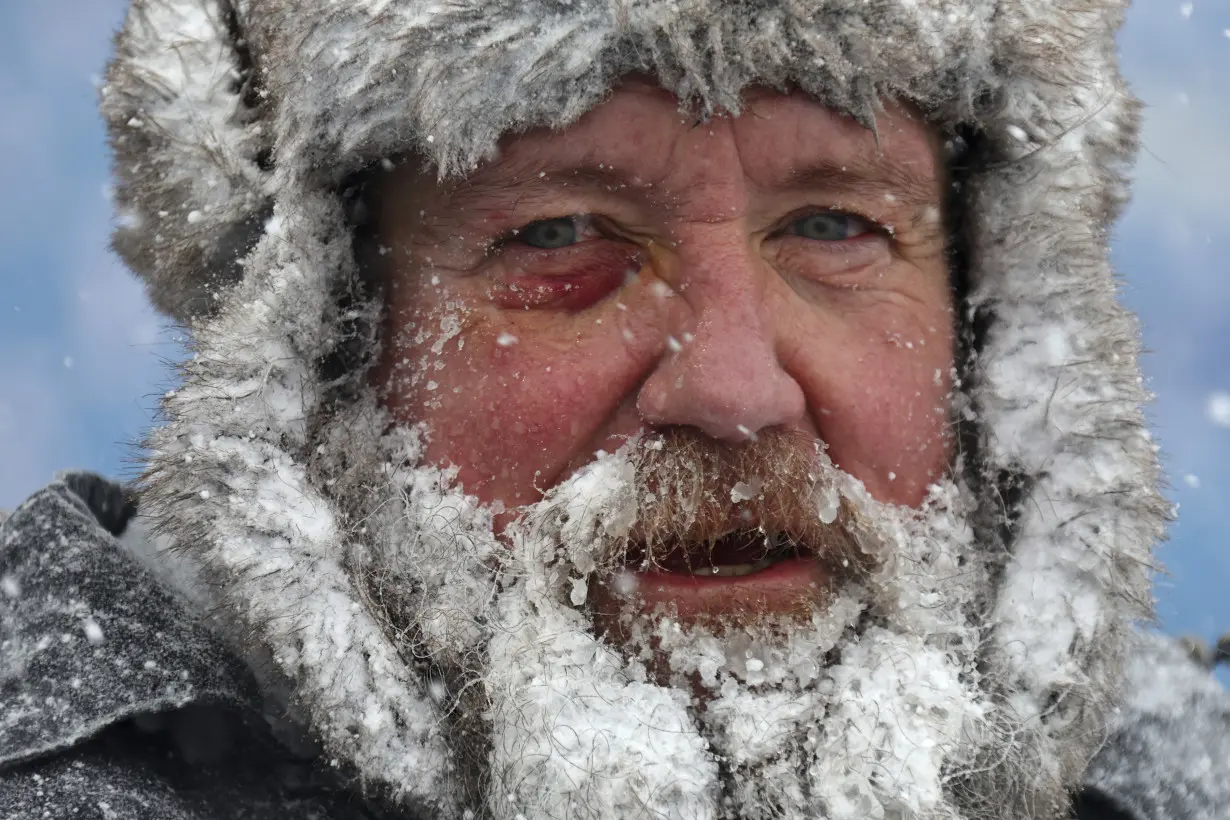

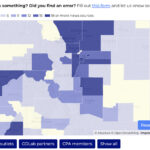 Universities are mapping where local news outlets are still thriving − and where gaps persist
Universities are mapping where local news outlets are still thriving − and where gaps persist
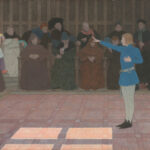 This class uses museums to show law students the high art of curating ideas
This class uses museums to show law students the high art of curating ideas
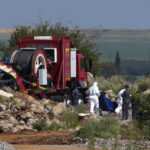 78 dead at abandoned South Africa gold mine that was scene of a standoff. Toll is expected to rise
78 dead at abandoned South Africa gold mine that was scene of a standoff. Toll is expected to rise
 Poland's leader accuses Russia of planning acts of terror against 'airlines over the world'
Poland's leader accuses Russia of planning acts of terror against 'airlines over the world'
 China blacklists four U.S. companies for involvement in arms sales to Taiwan
China blacklists four U.S. companies for involvement in arms sales to Taiwan
 China, Sri Lanka agree more investment and economic cooperation
China, Sri Lanka agree more investment and economic cooperation
 Music streams hit nearly 5 trillion in 2024. Women pop performers lead the charge in the US
Music streams hit nearly 5 trillion in 2024. Women pop performers lead the charge in the US
 Italy's Salvini faces calls to quit over late-running trains
Italy's Salvini faces calls to quit over late-running trains
